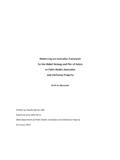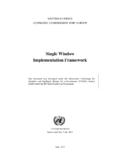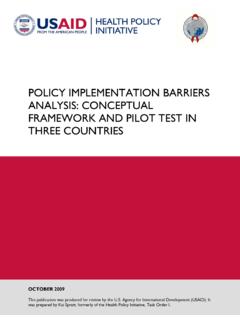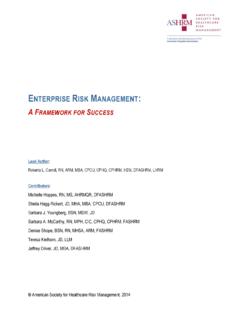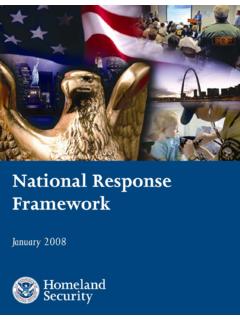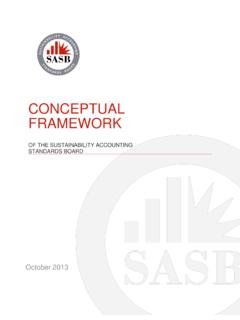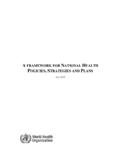Transcription of A PRACTICAL GUIDE - Cegnet
1 The ACEG framework for careers and work-related education: A PRACTICAL GUIDE . ACEG Association for Careers Education and Guidance The ACEG framework for careers and work-related education: A PRACTICAL GUIDE . Contents Acknowledgements 3. 1. Introduction 4. 2. The ACEG framework 6. 3. Managing strategy 18. 4. Managing curriculum 19. 5. Teaching, learning and assessment 24. 6. References 33. 2. The ACEG framework for careers and work-related education: A PRACTICAL GUIDE . Acknowledgements We are pleased to present this GUIDE to The framework and this GUIDE have been developed and produced by the Association for Careers Education and Guidance the ACEG framework for careers and work- (ACEG) and together they are intended to help raise the quality related education.
2 It is intended to be a and breadth of careers and work-related education for young complementary source of PRACTICAL help people. Following the Department for Education's decision to remove secondary schools' duty to provide careers and and suggestions for careers education work-related education from September 2012, we feel it is vital professionals when using the framework to continue to do all we can to help and support schools in for devising and developing programmes continuing to offer these vital components of the secondary of careers and work-related education in curriculum.
3 Their school or college, both as taught ACEG itself provided support to careers education specialists in subjects and across the curriculum. schools and colleges between 1969 and 2013. It continues that support as an important partner in the new Career Development Institute which brought together four professional associations (ACEG, ACPi, ICG and NAEGA) and opened its doors for business on 1st April 2013. Although this means that ACEG is no longer a separate organisation, we feel that the framework and GUIDE are fitting legacies to the work of ACEG and are confident that they will continue to be promoted and developed as an important element of the CDI's work.
4 We give our heartfelt thanks to ACEG Executive and Consultative Council members who have contributed to the creation of the framework and GUIDE in particular Anthony Barnes, Kath Wright and Debbie Godwin. Their combined wealth of knowledge and experience have been invaluable in producing this essential toolkit for delivering high quality careers education and guidance. Vince Barrett, ACEG President 2011-13. 3. The ACEG framework for careers and work-related education: A PRACTICAL GUIDE . 1. Introduction education prepares young people for school-to-work transitions.
5 Employers whom we met in Bradford were unanimous in regarding young people as lacking in soft skills and knowledge of the workplace - exactly the sort of skills that careers education and WRL were in place to provide. This was echoed by the CBI, Business in the Community and the Association of Employment and Learning Providers. Young people also spoke to us about the benefits they gained from work experience. 108. The Government's statutory guidance says that schools should consider a range of wider careers activities such as engagement with local employers and work-based education and training providers to offer all young people insights into the world of work.
6 The wording of the guidance was criticised by witnesses for being permissive, leaving it to schools to determine the extent to which they will include such activities. 109. The Government's decision to remove the statutory duty on schools to provide careers education and work- The rationale for the framework related learning has been heavily criticised by witnesses to our inquiry. We are persuaded of the benefits of The ACEG framework for careers and both these former provisions and we recommend work-related education was first published that the Government's statutory guidance to schools is strengthened to require schools to provide careers in April 2012.
7 It is a grid of outcome education and work-related learning as part of their duty. statements for seventeen areas of career Education Committee - Seventh Report. Careers and work-related learning at KS2, KS3, KS4 guidance for young people: The impact of the new duty and Post 16. on schools (January, 2013). The framework stems from a belief that career and work-related cmselect/cmeduc/632 learning should be an integral part of the curriculum for all learners. It is also in part a direct response to the regrettable ASCL and AoC strongly encourage schools to continue decision by the Department for Education to remove the statutory to provide careers education, alongside independent requirement on schools to provide careers and work-related and impartial careers guidance, for the following reasons: education (September 2012).
8 Successive reports continue to attest Pupils will need to be equipped with the knowledge to the importance of this aspect of the curriculum and to the and skills to make effective use of the careers problems caused by schools that make inadequate provision for information, advice and guidance provided. careers and work-related education. Careers education helps pupils to acquire the knowledge and practise the skills they need to find opportunities, make successful applications and A sample of recent reports manage smooth transitions on to the next stage of learning or work.
9 106. The Education Act 2011 also removed the statutory Without robust careers education, pupils do not have duty for schools to provide careers education and sufficient knowledge and understanding and therefore work-related learning (WRL) was removed by statutory guidance interviews are neither cost-effective nor instrument in August 2012. The dispensing of WRL at Key useful; they become remedial careers information and Stage 4 was a recommendation in the Wolf Report but education sessions.. when put out to public consultation, 89% answered no.
10 To the question of whether work-related learning should (Putting Young People First. ASCL/AOC. April, 2012). be removed as a statutory duty. Careers education was removed as a statutory duty without any public Schools have a moral responsibility to ensure that consultation. young people leave school with the skills, knowledge, attitudes and attributes to manage their life, learning 107. We received evidence from various sources which and work. Young people's understanding of career and supported the need for careers education and WRL. progression routes, as well as their level of preparation We were told by The Work Foundation that careers for the workplace, supports their ability to progress 4.
